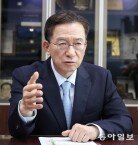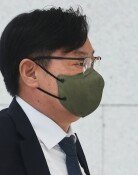Pyongyang must give up nuke to gain Mt. Kumgang tour
Pyongyang must give up nuke to gain Mt. Kumgang tour
Posted February. 05, 2014 07:20,
Working-level contact between South and North Korean authorities to arrange reunions of separated families is set to take place on Wednesday after many turns and twists. Pyongyang has constantly turned a deaf year to Seouls offer, and only sent a memo to accept contact as recently as Monday, about a week after the Souths suggestion. It is uncertain whether reunions will take place on February 17 through 22, because Pyongyang has failed to specify a date. Since it takes at least two weeks to prepare for a meeting, holding reunions on February 17 is impossible unless Pyongyang proactively responds. There is a chance that the North could drag its feet by citing as excuse the annual South Korea-U.S. joint military drill scheduled for end-February.
In September last year, the North cancelled a family reunion event that the two Koreas had agreed upon, just four days before the schedule. President Park Geun-hye proposed the North to hold reunions of separated families in her New Years press conference this year, but the North rejected the offer by citing political and military issues. As a result, separated families at advanced ages who had high hope had to spend the seollal (Lunar New Year holiday) in big despair and disappointment again. If such events are repeated over and over again, trust in the Kim Jong Un regime will inevitably deteriorate in tandem.
The North has been staging a flurry of conciliatory gestures since announcing on January 16 a so-called important offer, through which it demanded halt of reciprocal slander and South Korea-U.S. joint military drills. However, Pyongyangs real actions were a far cry from moves to ease inter-Korea tension. James Clapper, Director of the National Intelligence, said North Korea is expanding uranium enrichment facilities at its Yongbyon nuclear complex, and has resumed the operation of a plutonium reactor. If the North has reprocessed 8,000 wasted nuclear fuel rods, it is believed to have secured a volume of weapons-grade plutonium enough to produce three to four nuclear weapons. Also worrisome is a news report by 38 North, a website on North Korea affairs, which suggested that Pyongyang is conducting a project to expand the launch site for an inter-continental ballistic missile with a longer range than the Eunha 3, which the North launched in December 2012.
The North has not mentioned give-up of its nuclear weapons, despite staging a diplomatic propaganda campaign, in which it repeats its important offer by mobilizing its envoys to the U.N., China, and the U.K. Demanding halt to the South Korea-U.S. military drill, while continuously pushing for nuclear development, the biggest cause for inter-Korean tension, is Pyongyangs typical act to hold Seoul accountable for tension. The South Korean government and the international community are not naïve enough to be cheated by the deceitful plot by the North that is strengthening its nuclear armament by using peace propaganda as means of defense. Iran has secured easing of international sanctions by promising to halt enrichment of weapons-grade uranium.
Given that the North proposes the South to hold reunions of separated families in Mount Kumgang, Pyongyang apparently has keen interest in resumption of South Koreans tour to the scenic mountain in the North. However, the resumption of the tour to the Mount Kumgang resort cannot be considered separately from the Norths give-up of nuclear weapons. The Norths fraudulent tactic to receive South Koreas economic aid by disguising its nuclear development with peace propaganda will never work.
Headline News
- Med professors announce intention to leave hospitals starting Thursday
- Bridge honoring Sgt. Moon Jae-sik unveiled in Pennsylvania
- Chief of Staff Chung tells presidential secretaries to stay away from politics
- US FTC bans noncompete agreements
- N. Korea launches cyberattacks on S. Korea's defense companies







